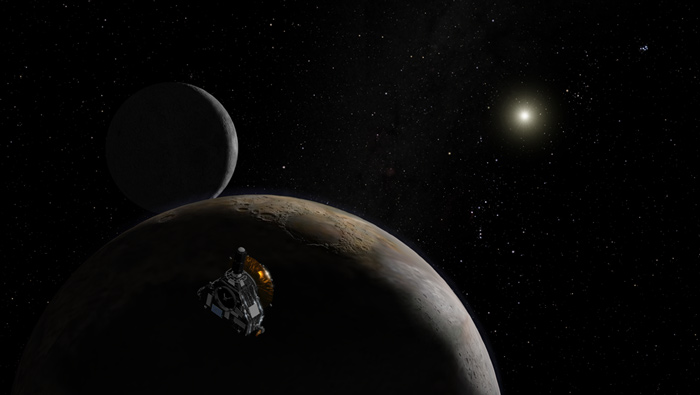Pluto-Bound Probe Passes Mars’ Orbit

NASA's NewHorizons probe has left the inner planets of the Solar System behind as it streakstoward a rendezvous with Pluto and its moons.
The spacecraft, billed as NASA'sfastest-flying probe, hurtled past the orbit of Mars - though not the planetitself - Friday on its way towards a Jupiter flyby and its more distant target Pluto.
"It'spretty amazing," New Horizons principal investigator AlanStern told SPACE.com. "It'sa straight line across the Solar System. There are hardly any curves becausethis is so fast."
New Horizons sped past Mars'orbit some 151 million miles (243 million kilometers) from the Sun at a rate ofabout 13 miles (21 kilometers) per second. The red planet, however, trailedbehind the spacecraft at a distance of about 186 million miles (299 millionkilometers), mission managers said, adding that New Horizons was closer toEarth than Mars.
NASA launchedNew Horizons, a piano-sized spacecraft weighing about 1,054 pounds (478 kilogram),atop a Lockheed Martin-built Atlas 5 rocket - its most powerful booster - to flingthe Pluto-probe spaceward on Jan. 19, 2006.
Six of the probe's seven scienceinstruments have already been checkedfor their health as the spacecraft heads towards Jupiter, where it will usethe giant planet's gravity to boost its way on to Pluto and the icyobject-filled Kuiper Belt.
But first, the spacecraft must passthrough the AsteroidBelt, which despite its reputation is primarily made up of empty spacerather than a teeming rock field, mission managers said.
Breaking space news, the latest updates on rocket launches, skywatching events and more!
"We won't be hit," said Stern, theexecutive director of the space science and engineering division at theSouthwest Research Institute in Boulder, Colorado. "We won't even come closeenough to make any useful science observations of asteroids. They're reallyvery far apart."
New Horizons is expected to fly pastPluto and its moons July 2015. The spacecraft is due to make its closestapproach to Jupiter on Feb. 28, 2007.
- NASA Probe Enroute to Pluto in Good Health
- Hubble Finds Pluto's Moons Less Than Colorful
- Behind the Pluto Mission: An Interview with Project Leader Alan Stern
- Reaching for the Edge: New Horizons Spacecraft Bound for Pluto

Tariq is the award-winning Editor-in-Chief of Space.com and joined the team in 2001. He covers human spaceflight, as well as skywatching and entertainment. He became Space.com's Editor-in-Chief in 2019. Before joining Space.com, Tariq was a staff reporter for The Los Angeles Times covering education and city beats in La Habra, Fullerton and Huntington Beach. He's a recipient of the 2022 Harry Kolcum Award for excellence in space reporting and the 2025 Space Pioneer Award from the National Space Society. He is an Eagle Scout and Space Camp alum with journalism degrees from the USC and NYU. You can find Tariq at Space.com and as the co-host to the This Week In Space podcast on the TWiT network. To see his latest project, you can follow Tariq on Twitter @tariqjmalik.
